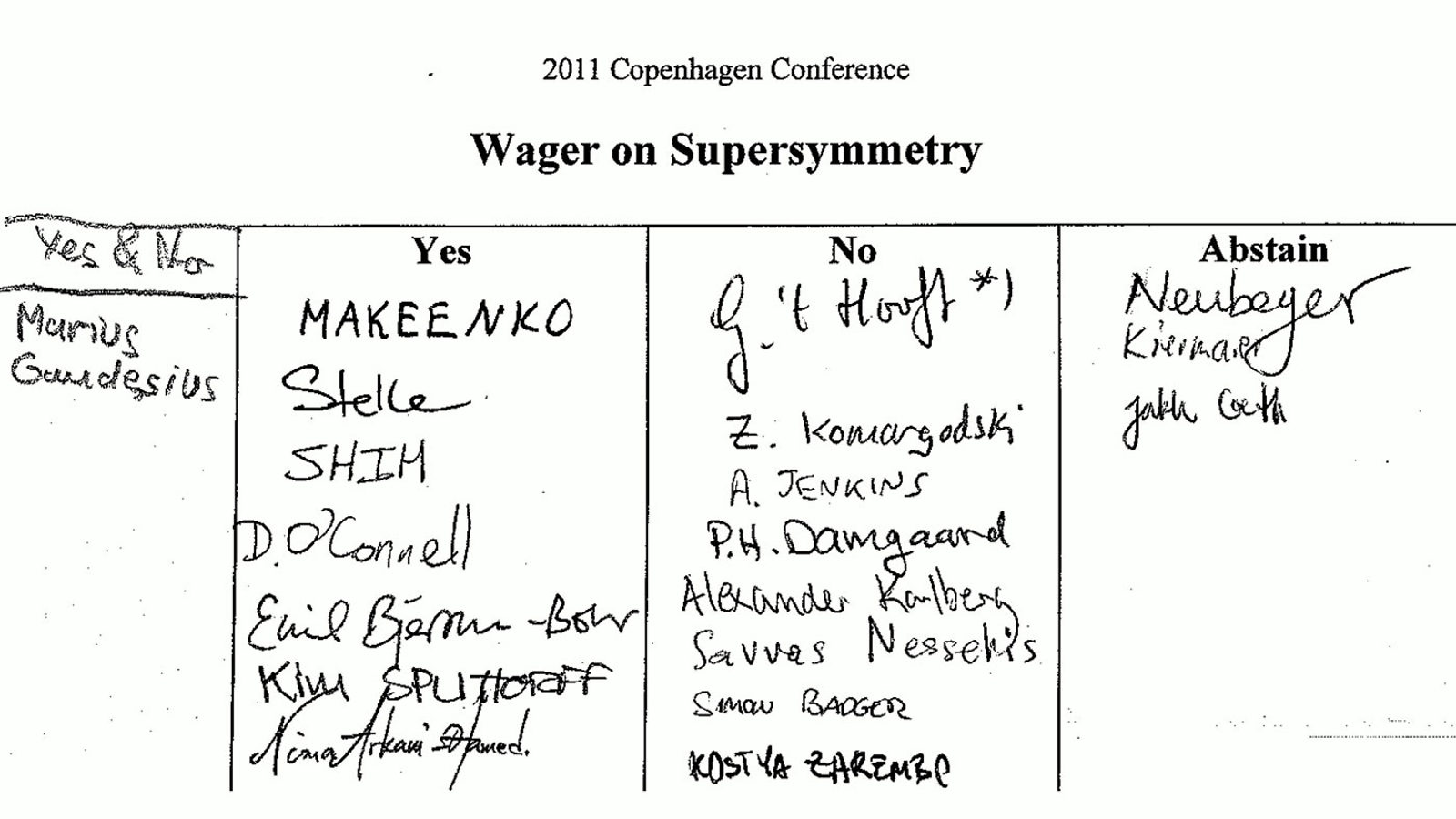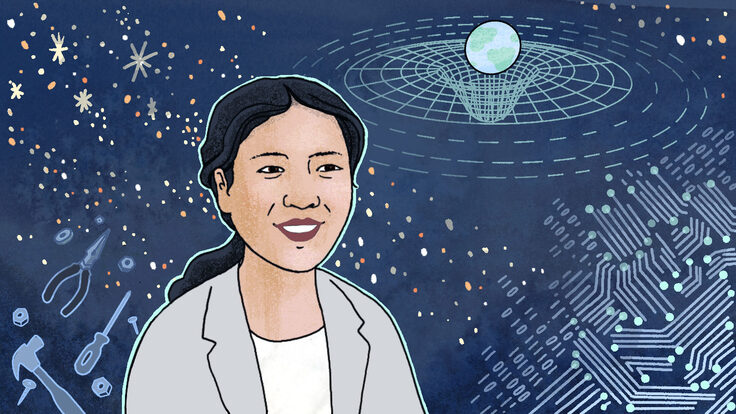Scientists at the Large Hadron Collider have exactly two years to find evidence of new particles. Cognac is on the line.
In July 2000, physicists at the Triangle-2000 meeting in Copenhagen—so called because it once rotated between three cities in Europe—passed a document around the conference room inviting attendees to predict whether, in the next 10 years, experiments at the LHC would discover evidence of a theory called Supersymmetry. The losers would owe the winners bottles of liquor.
“We were enjoying ourselves,” says Nobel Laureate Gerard ’t Hooft of Utrecht University in the Netherlands, who signed in the “no” column of the bet. “We were so happy that the machine was about to be built which would tell us who is right. That’s always something nice to see in our field.”
Supersymmetry, also called SUSY, is a theory that each known fundamental building block of the universe is balanced by a partner particle of an opposing type.
“Supersymmetry is a deep idea that has played a major role in theoretical physics for the past 40 years,” said physicist Nima Arkani-Hamed of the Institute for Advanced Study in New Jersey, who signed his name in the “yes” column, at a recent conference.
The theory is widely acknowledged as a mathematically beautiful answer to questions left lingering by the Standard Model of particle physics, such as why gravity is so weak and what kinds of particles make up dark matter, and it is an essential component of many models of string theory.
However, some scientists think nature might have other ideas.
“My problem with Supersymmetry is that, although it would explain things, it itself would also require an explanation,” ’t Hooft says. “Why would nature generate Supersymmetry in the first place?”
The prescribed 10 years passed after the original bet with no sign of SUSY, but the winners decided it was too early to claim their cognac. Because of initial problems with connections between superconducting magnets, the LHC had faced a delayed start at a reduced energy.
“Graciously, we offered to make a new wager,” says physicist Poul Damgaard of the Niels Bohr Institute in Denmark, who bet against the discovery of SUSY. “Funnily enough, many people still did sign yes.”
The group added more participants and a five-year extension to the bet, giving the LHC until June 16, 2016, to find evidence of Supersymmetry. The LHC will restart in 2015, ready to search for new particles at higher energies than any collider before it. The clock is ticking.







